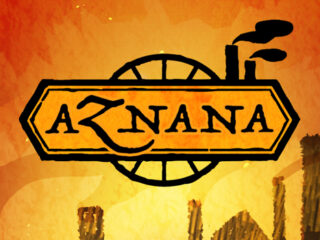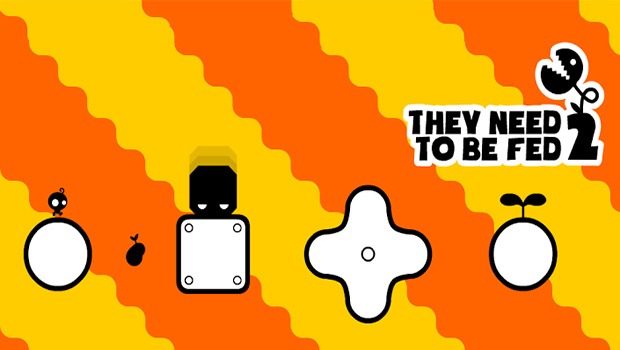 A common fear when playing platformers is the fear of falling. Overestimate a jump by just a few pixels and you’ll skid off the next ledge into the dreaded abyss that exists just below the play screen. In the They Need To Be Fed series, however, falling is an impossibility. Gravity pulls you towards whatever object you’re standing on, until you jump close enough to another object that will suck you into its gravitational field instead. You never have to worry about plummeting off-screen—but there are still plenty of obstacles within the frame for you to contend with.
A common fear when playing platformers is the fear of falling. Overestimate a jump by just a few pixels and you’ll skid off the next ledge into the dreaded abyss that exists just below the play screen. In the They Need To Be Fed series, however, falling is an impossibility. Gravity pulls you towards whatever object you’re standing on, until you jump close enough to another object that will suck you into its gravitational field instead. You never have to worry about plummeting off-screen—but there are still plenty of obstacles within the frame for you to contend with.
If you haven’t played the original, you can either cough up the 99 cents to play it on your Android or try the flash version for free online. There isn’t any plot to keep up with; all you’re told is that some insanely cute creatures are starving to death for reasons unknown. Whether or not you agree with the cuteness factor, it’s up to you to feed them by guiding your character into their pointy, gaping mouths. Really. The goal of each level is to find these creatures and get eaten. There are many hazards along the way, including spikes, missiles and lasers—but hey, no one ever said suicide was supposed to be convenient. You must also collect diamonds to unlock new worlds, and in order to be crowned as the Diamond King.
In Jesse Venbrux’s follow-up, They Need To Be Fed 2, he’s done well expanding on a great idea. The starving creature now looks like it wandered off the set of Little Shop of Horrors instead of a radioactive potato farm, but your objective is the same. A key difference is that you now have to gather seeds as well as diamonds. Planting the seeds will cause different types of flora to appear that enable you to complete the level—like little leaves that propel you to greater heights. Sometimes the creature you’re meant to feed will grow from one of these seeds, and I do think there’s something poetic about planting the very thing that will devour you.
The intrigue starts off slow at first, and I had to wonder if I’d set my expectations too high. I was disappointed right away by changes in the summary screen after each level. It no longer keeps track of your time, or counts the number of retries it takes you to finish. Instead it just says, “GOOD JOB,” and honestly, I’d rather have stats than compliments. Aside from that minor quibble, the game just seemed way too easy. There were definitely some good additions, like making certain objects you stand on susceptible to getting popped by missiles, and including laser cannons that specifically target you instead of moving in a set path. But the first seven worlds really are a walk in the park, and I was able to beat Classic Mode in under an hour.
What I didn’t realize is that I was just being lulled into a false sense of security. Once you beat Classic Mode, you unlock Epic Mode, and it lives up to its name. It subverts the traditional platformer structure by having you move from right to left, just to subtly disorient you from the get-go. The “How to Play” page guarantees there will be no more checkpoints, many explosions…and dots. If you grab all the dots in a level, you earn a Reverse Diamond.
Although dot collecting doesn’t seem too glamorous on face value, I soon became a dot fiend. Some levels have more than 30 of the things, and trying to track them all down while also picking up the necessary seeds, and having less than two seconds before the surface beneath you explodes is some intense stuff. The spikes, missiles, and lasers that you thought you’d gotten used to suddenly come at you all at once. Surfaces rotate faster. The music picks up in tempo. The mod color-blocking background is wacky to the point of being visually oppressive. Objects that you thought were subject to certain laws are now unstable. It’s tough to keep up, and you’re sure to work up a sweat if you want to become the Reverse Diamond King. Suicide may not be easy, but in this case it’s a lot of fun. And it’s for a good cause! They do need to be fed, after all.
-
SCORE
-
SCORE 2




























